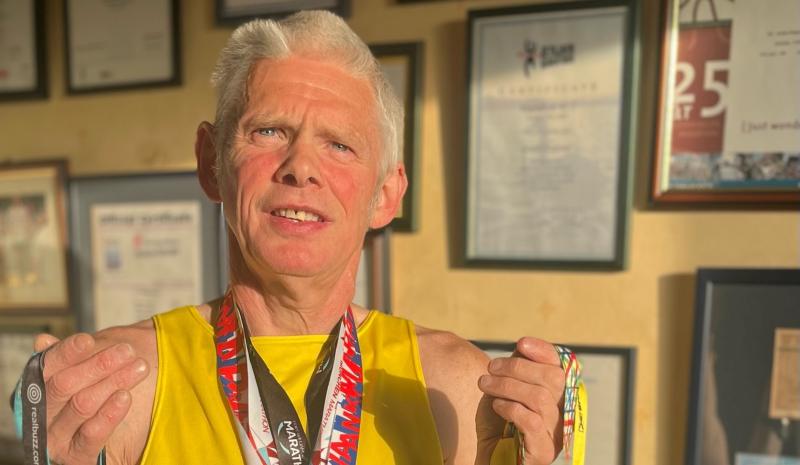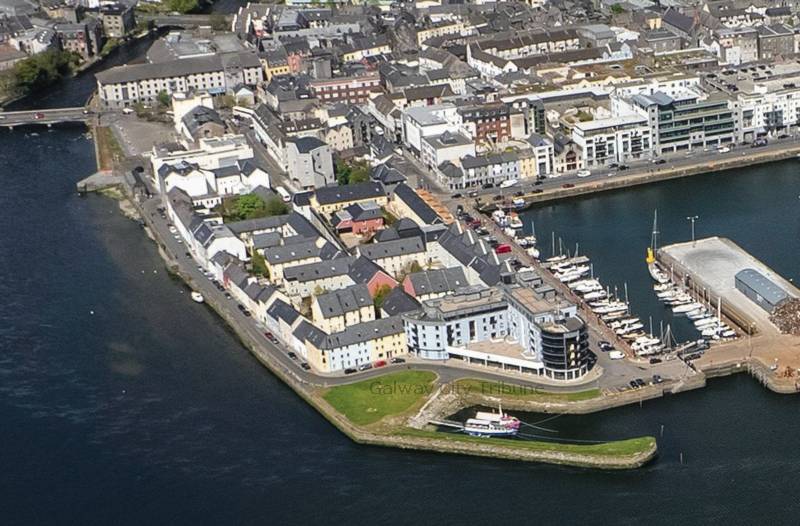News
Salmon farms result in sea lice increase

Salmon farms have a negative impact on wild sea trout, a new definitive scientific paper has concluded.
The study, which reviews over 300 scientific publications on the subject, confirms evidence collated since the early 1990s in Ireland regarding the impact of sea lice on wild sea trout stocks, particularly in relation to the collapse of Connemara’s sea trout stocks.
Inland Fisheries Ireland and Galway Bay Against Salmon Cages (GBASC) have both welcomed the report entitled ‘Effects of salmon lice Lepeophtheirus salmonis on wild sea trout Salmo trutta—a literature review’.
They argue the conclusions of the report cast doubt over plans for a massive fish farm in Galway Bay.
The project was funded by the Norwegian Seafood Research Fund which provides investment in Norwegian seafood industry-based research and development. A team of top international scientists from Norway, Scotland and Ireland reviewed all available published studies on the effects of sea lice and have concluded that sea lice have negatively impacted wild sea trout stocks in salmon farming areas in Ireland, Scotland and Norway.
The study also examined the potential effect of sea lice on salmon and concluded that sea lice have a potential significant and detrimental effect on marine survival of Atlantic salmon with potentially between 12% and 29% fewer salmon spawning in salmon farming areas.
These conclusions concur with previously published Inland Fisheries Ireland (IFI) research on the potential impact of sea lice from marine salmon farms on salmon survival. The studies reviewed indicate that salmon farming increases the abundance of lice in marine habitats and that sea lice in intensively farmed areas have negatively impacted wild sea trout populations. The effects of sea lice on sea trout are increased marine mortality and reduced marine growth.
IFI, who welcomed the study, said it has consistently called for marine salmon farms to maintain sea lice levels close to zero prior to and during the wild sea trout and salmon smolt migration period in spring. It also raised concerns regarding the location of salmon farms in the estuaries of salmon and sea trout rivers.
The Board of Inland Fisheries Ireland in a statement said: “This new scientific review paper confirms the need for very tight regulation of sea lice levels on salmon farms and raises legitimate concerns with regard to the potential impact of new large scale salmon farms proposed along Ireland’s west coast on salmon and sea trout stocks.
“Regulators will now need to consider the results of this comprehensive review when making decisions on the sustainability and approval of future marine salmon aquaculture licences and the regulation of sea lice at existing sites so as to ensure no negative impact on salmon and sea trout stocks.”
GBASC also welcomed the report and said it ‘blows out of the water’ previous research which said that sea lice cause just 1% of mortality in wild salmon.
“In light of the results of this new study we also call on Minister Simon Coveney not to grant any licence large or small for a salmon farm in Galway Bay. This new study proves that if a licence is granted for Galway Bay, it will have disastrous consequences for the wild salmon and sea trout in the Corrib and other rivers surrounding Galway Bay,” the lobby group said.
Connacht Tribune
West has lower cancer survival rates than rest

Significant state investment is required to address ‘shocking’ inequalities that leave cancer patients in the West at greater risk of succumbing to the disease.
A meeting of Regional Health Forum West heard that survival rates for breast, lung and colorectal cancers than the national average, and with the most deprived quintile of the population, the West’s residents faced poorer outcomes from a cancer diagnosis.
For breast cancer patients, the five-year survival rate was 80% in the West versus 85% nationally; for lung cancer patients it was 16.7% in the west against a 19.5% national survival rate; and in the West’s colorectal cancer patients, there was a 62.6% survival rate where the national average was 63.1%.
These startling statistics were provided in answer to a question from Ballinasloe-based Cllr Evelyn Parsons (Ind) who said it was yet another reminder that cancer treatment infrastructure in the West was in dire need of improvement.
“The situation is pretty stark. In the Western Regional Health Forum area, we have the highest incidence of deprivation and the highest health inequalities because of that – we have the highest incidences of cancer nationally because of that,” said Cllr Parsons, who is also a general practitioner.
In details provided by CEO of Saolta Health Care Group, which operates Galway’s hospitals, it was stated that a number of factors were impacting on patient outcomes.
Get the full story in this week’s Connacht Tribune, on sale in shops now, or you can download the digital edition from www.connachttribune.ie. You can also download our Connacht Tribune App from Apple’s App Store or get the Android Version from Google Play.
Connacht Tribune
Marathon Man plans to call a halt – but not before he hits 160 races

On the eve of completing his 150th marathon, an odyssey that has taken him across 53 countries, Loughrea’s Marathon Man has announced that he is planning to hang up his running shoes.
But not before Jarlath Fitzgerald completes another ten races, making it 160 marathons on the occasion of his 60th birthday.
“I want to draw the line in 2026. I turn 57 in October and when I reach 60 it’s the finishing line. The longer races are taking it out of me. I did 20 miles there two weeks ago and didn’t feel good. It’s getting harder,” he reveals.
“I’ve arthritis in both hips and there’s wear and tear in the knees.”
We speak as he is about to head out for a run before his shift in Supervalu Loughrea. Despite his physical complaints, he still clocks up 30 miles every second week and generally runs four days a week.
Jarlath receives injections to his left hip to keep the pain at bay while running on the road.
To give his joints a break, during the winter he runs cross country and often does a five-mile trek around Kylebrack Wood.
He is planning on running his 150th marathon in Cork on June 4, where a group of 20 made up of work colleagues, friends and running mates from Loughrea Athletics Club will join him.
Some are doing the 10k, others are doing the half marathon, but all will be there on the finishing line to cheer him on in the phenomenal achievement.
Get the full story in this week’s Connacht Tribune, on sale in shops now, or you can download the digital edition from www.connachttribune.ie. You can also download our Connacht Tribune App from Apple’s App Store or get the Android Version from Google Play.
CITY TRIBUNE
Galway ‘masterplan’ needed to tackle housing and transport crises

From the Galway City Tribune – An impassioned plea for a ‘masterplan’ that would guide Galway City into the future has been made in the Dáil. Galway West TD Catherine Connolly stated this week that there needed to be an all-inclusive approach with “vision and leadership” in order to build a sustainable city.
Deputy Connolly spoke at length at the crisis surrounding traffic and housing in Galway city and said that not all of the blame could be laid at the door of the local authority.
She said that her preference would be the provision of light rail as the main form of public transport, but that this would have to be driven by the government.
“I sat on the local council for 17 years and despaired at all of the solutions going down one road, metaphorically and literally. In 2005 we put Park & Ride into the development plan, but that has not been rolled out. A 2016 transport strategy was outdated at the time and still has not been updated.
“Due to the housing crisis in the city, a task force was set up in 2019. Not a single report or analysis has been published on the cause of the crisis,” added Deputy Connolly.
She then referred to a report from the Land Development Agency (LDA) that identified lands suitable for the provision of housing. But she said that two-thirds of these had significant problems and a large portion was in Merlin Park University Hospital which, she said, would never have housing built on it.
In response, Minister Simon Harris spoke of the continuing job investment in the city and also in higher education, which is his portfolio.
But turning his attention to traffic congestion, he accepted that there were “real issues” when it came to transport, mobility and accessibility around Galway.
“We share the view that we need a Park & Ride facility and I understand there are also Bus Connects plans.
“I also suggest that the City Council reflect on her comments. I am proud to be in a Government that is providing unparalleled levels of investment to local authorities and unparalleled opportunities for local authorities to draw down,” he said.
Then Minister Harris referred to the controversial Galway City Outer Ring Road which he said was “struck down by An Bord Pleanála”, despite a lot of energy having been put into that project.
However, Deputy Connolly picked up on this and pointed out that An Bord Pleanála did not say ‘No’ to the ring road.
“The High Court said ‘No’ to the ring road because An Bord Pleanála acknowledged it failed utterly to consider climate change and our climate change obligations.
“That tells us something about An Bord Pleanála and the management that submitted such a plan.”
In the end, Minister Harris agreed that there needed to be a masterplan for Galway City.
“I suggest it is for the local authority to come up with a vision and then work with the Government to try to fund and implement that.”












